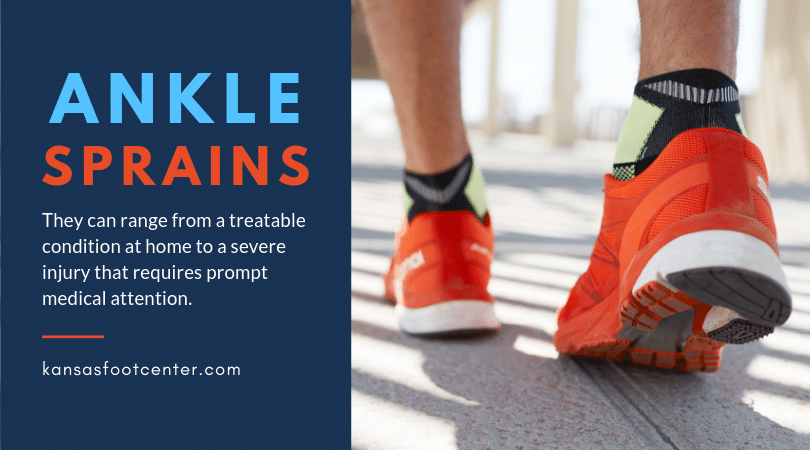Ankle Sprains
Perhaps you were charging down the field—or just simply walking down the sidewalk. All it takes is a wrong placement, an inopportune twist, and suddenly you have a painful, swollen, throbbing ankle.
An ankle sprain tends to happen to everyone at some point in their life. It is often treatable at home, but that doesn’t mean you should always forego professional treatment. What you do when you sprain your ankle can make the difference between full recovery and problems in the future.
How Do I Know I Have a Sprain?
An ankle sprain isn’t one to make its presence known lightly. Symptoms of a sprain can differ depending on the severity, but may include:
- Pain, especially when trying to bear weight on the ankle.
- Swelling
- Bruising
- Tenderness of the ankle to the touch
- Instability or weakness in the ankle
- An inability to move the ankle in its full range of motion
- In some cases, a popping sound
When a sprain is particularly bad, there can be concern over whether it may actually be a broken bone. Our advice is this: when it’s bad enough that you have to worry about that, it doesn’t matter. You need to keep weight off your ankle and see us right away!

What Causes a Sprain?
When you sprain your ankle, you have injured one or more of the ligaments that holds the joint together.
This injury comes in the form of straining or extending the ligaments farther than they are intended to go. This can happen during sports, but is also likely if you step in a hole, come down off a step strangely, or perform any other action that severely rolls or twists your ankle.
Treating Your Sprain
Immediate action after an ankle sprain can significantly aid your comfort and recovery. Follow the traditional steps of:
- REST – Stay off your injured ankle. Whatever you were doing when the sprain happened, stop.
- ICE – Apply ice to the ankle every 2 hours. Use an ice pack covered in a thin towel or cloth (never apply a cold substance directly to the skin) and hold for 10-20 minutes. If the cold hurts, stop and add more insulation to the ice pack. Repeat this routine for 24-72 hours after the injury, or until swelling has gone away.
- ELEVATION – Keep the ankle raised above heart level for a couple hours every day, and especially at night. This can mean propping your ankle up on the coffee table or on several pillows in bed.
While most mild sprains can be treated well enough at home, it’s still important to reach out to us to know that a sprain has happened.
Why? Because we want to record the sprain and its circumstances, and advise you on whether you should come in for a closer examination. If a sprain does not heal properly, it can lead to chronic ankle instability, which can result in more sprains in the future. The risks of arthritis and chronic pain also rise, and we want to help ensure that doesn’t happen.
If your sprain requires advanced treatment, we may recommend a brace or boot to immobilize the area. Our MLS Laser Therapy can also be an effective tool at relieving the pain of injured ligaments and encouraging accelerated healing.
If you have sprained your ankle or have been experiencing recurring sprains, come see us at The Kansas Foot Center. Call us at (866) 222-5177 for additional information or to schedule a visit. You can also use our online form to ask questions or request an appointment in our Wichita or Newton offices.
